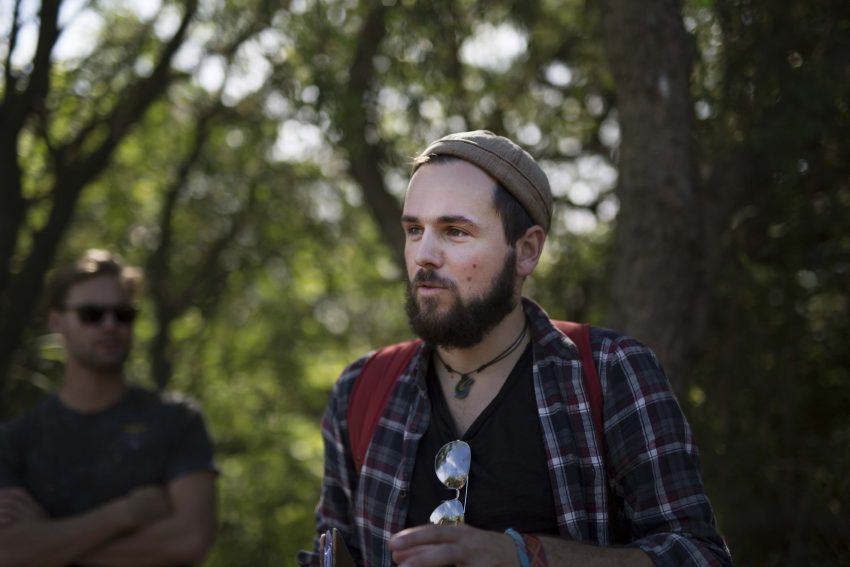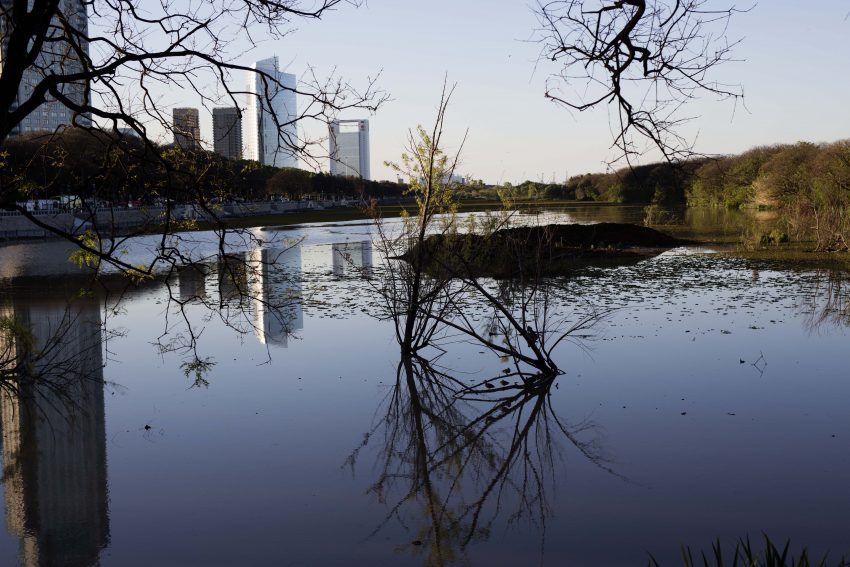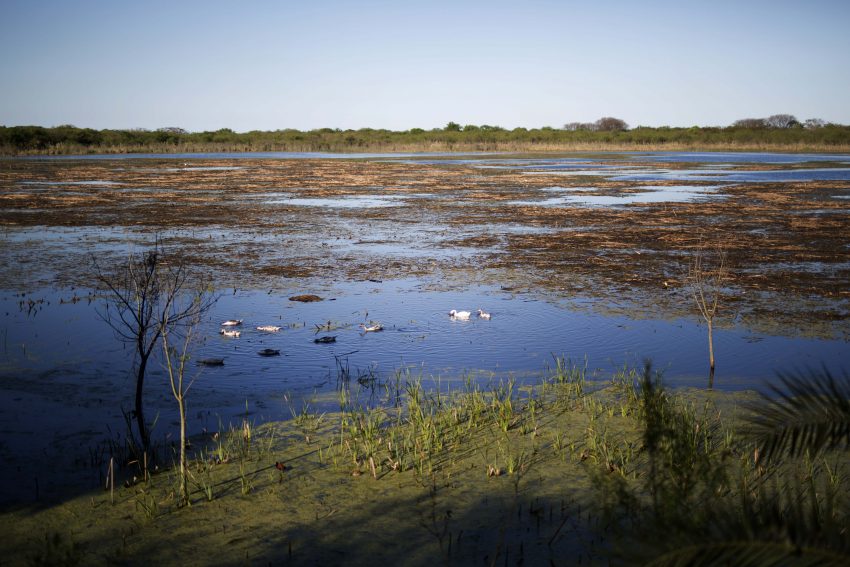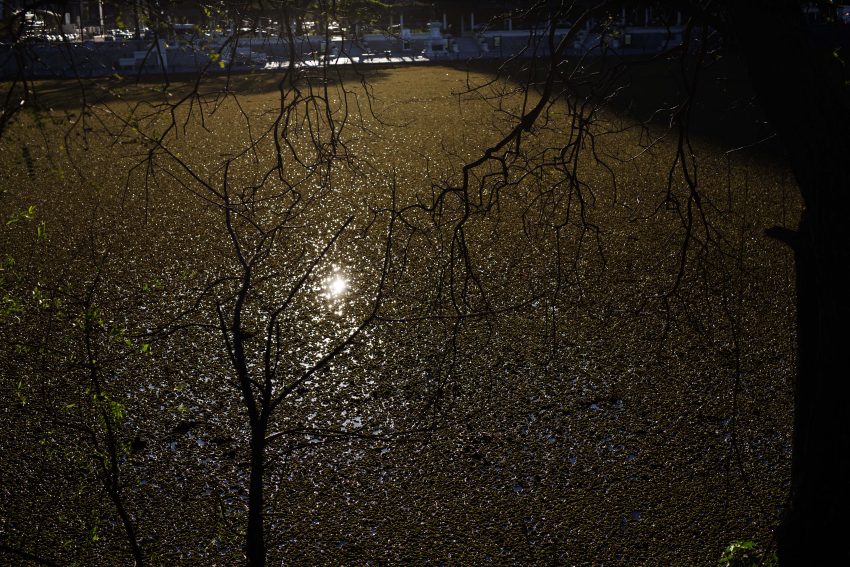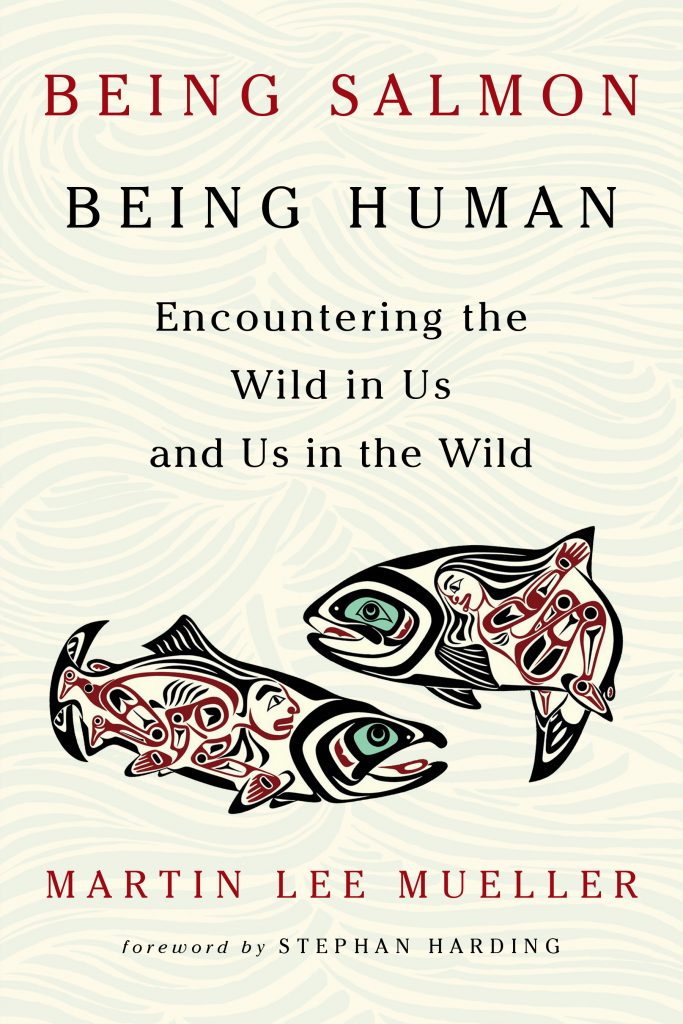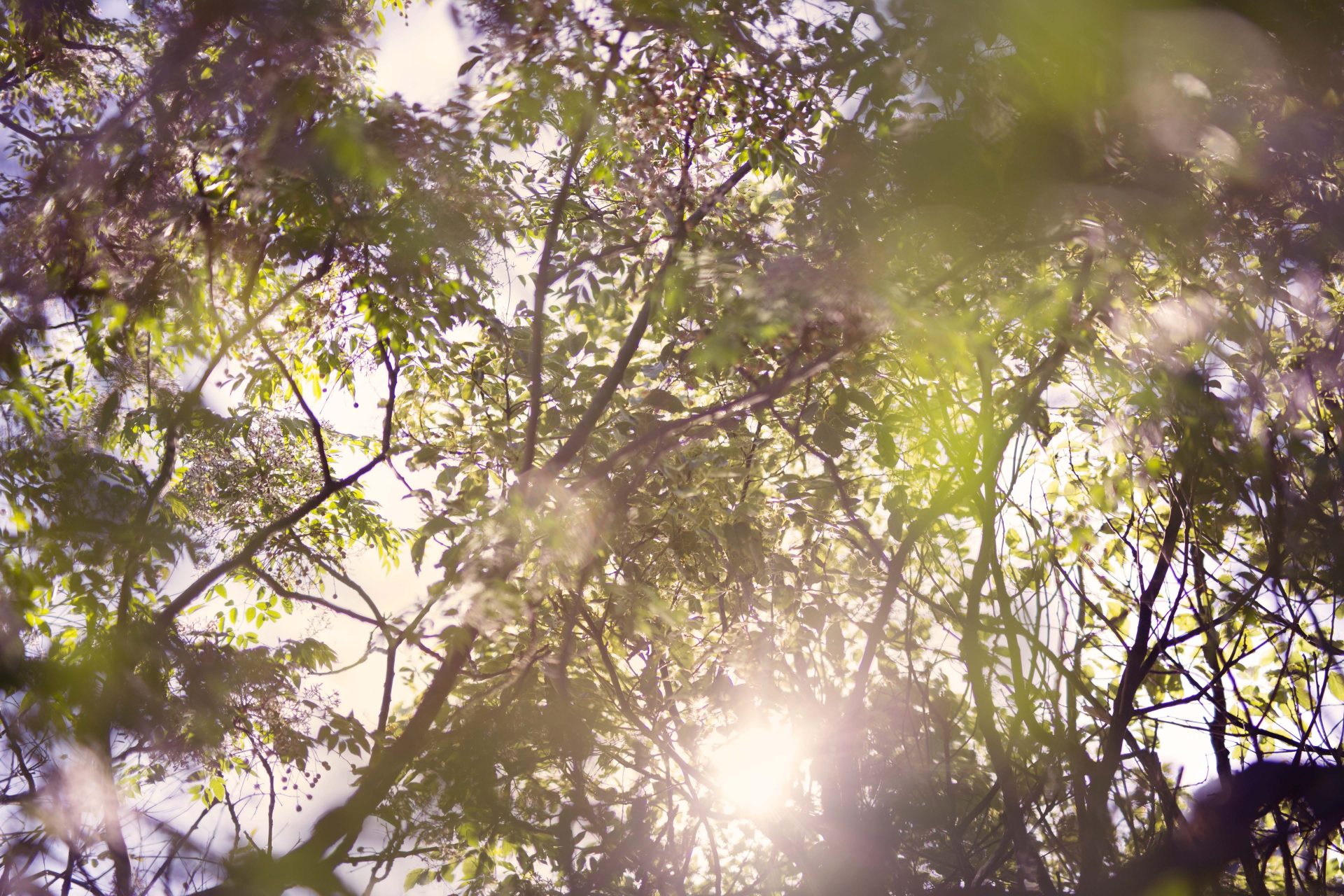
“The amazing thing is that every atom in your body came from a star that exploded. And, the atoms in your left hand probably came from a different star than your right hand. It really is the most poetic thing I know about physics: You are all stardust. You couldn’t be here if stars hadn’t exploded (…) So, forget Jesus. The stars died so that you could be here today.”
Lawrence M. Krauss. A Universe from Nothing: Why There Is Something Rather Than Nothing
How to put the unexplainable 4 600 000 000 years of Earth history into perspective? The age seems to be beyond our understanding, so how to appreciate it? And why should we?
Recently, philosophy teacher Dr. Martin Lee Mueller took the philosophy students on a Deep Time Walk, a «journey» developed by ecologist Dr. Stephan Harding at Schumacher College in the UK. The idea is that when walking, every meter equals one million years. By walking 4.6 kilometers, the participants walk through the 4,600 million years of Earth’s history. In this way, it is easier to connect the experience of human life to geological time, and understand how little our human history is, but yet so destructive. The Science Director at Deep Time Walk, Dr Stephan Harding, explains it like this: «When we walk, we realize in our bodies how ancient, how marvelous the Earth of ours is (…) When we have that sensibility, hopefully we will act to protect the earth. To nurture all life on this planet».
In Buenos Aires, philosophy teacher Mueller took the students to the ecological reserve Costanera Sur. Early in the story, we heard of nuclear furnaces of stars creating elements such as carbon, nitrogen, oxygen, and iron, all of them indispensable for the evolution of life as we know it. We heard of stardust becoming Earth, and of Earth’s colliding with another embryo-planet, birthing our moon. In the beginning, the moon may have looked ten times bigger in the sky, being that much closer to the infant Earth. While walking, Mueller made various stops explaining the key moments of the history our planet, the formation of the oceans and several atmospheres: the way in which the moon fixed Earth’s tilt, thus making it possible to have seasons; the way in which life may have begun in tiny, hot bubbles alongside subsea volcanic chimneys; the evolution of the first nucleated cells, of multicellular organisms, and at long last, of all the species we know today.
– The evolution of beauty
During the walk, we came across wondrous episodes. Such as the events that happened as late in the story as 130 meters before present-day. By that time, we were just one bend in the path away from the end of our walk. Our feet were tired. Worlds had collided, Earth had frozen over and thawed again, mass extinctions had repeatedly wiped out the majority of Earth´s creatures, and life had radiated out again into greater diversity after every big extinction event. And here we were, 130 million years from present day with purple flowers one each side of the path. It was appropriate: This was the moment when flowering plants co-evolved alongside insects. Our guide Mueller speculated whether this may have also been the moment in the story when the appreciation of beauty evolved.
Afterwards, I read up on this moment and came across a piece in the science magazine Scientific American. It explained how our own ancestors, at this time, where small rat-like creatures eating fallen fruit, seeds and insects at night. Trees were wasting a lot of pollen using the wind to try to hit a female flower, like some trees still do today. But, powerfully, evolution found a renewed way:
The insects started to eat the nutritious pollen and advanced into pollen experts. In this process they transported some of the pollen from male to female parts of the plants. Furthermore, the plants evolved flowers with irresistible colors and immense shapes and unique sizes, all to draw attention and make themselves appealing. Time passes and competitive plants prosper sugar-rich nectar to reward the insects. At the end, the great masters insects of gathering pollen and nectar were the bees. They turned into «the major global pollinator of crops and native plants», as written in Nature. They are essential for biodiversity conservation.
E. O. Wilson, thought of by some as the ‘father of sociobiology’, has once said: «If all mankind were to disappear, the world would regenerate back to the rich state of equilibrium that existed ten thousand years ago. If insects were to vanish, the environment would collapse into chaos.» Before him, Albert Einstein had remarked: «Mankind will not survive the honeybees’ disappearance for more than five years.» That is to say, bees and other pollinating insects are absolutely indispensable in order to produce the vegetables and fruits we require near daily to stay alive.
Chillingly, just days before their excursion, Mueller and his students had discussed a recent report from Germany. According to the report, three quarters of all insects across Germany have disappeared in just the past 25 years.
– So here we are, he said, «still smelling the beautiful purple wayside flowers, still pondering the early co-evolution of pollinating insects and flowering plants. Here we are, still stretching our imagination and whizzing with breathtaking speed through deep time – when suddenly, present-day catches up fast, and hard.»
– The recent news of widespread insect death occurring right now brings a strangely cold, strangely frightening note to the story, Dr. Mueller said.
Latecomers on their way to becoming a geological force
Downstream, just as the story of Earth’s evolution across deep time was very nearly over, Mueller began another story: ours. Homo sapiens, the species, appeared somewhere around 30 centimeters to present-day. The most recent ice age ended as recently as 1.3 centimeters ago. The Americas seem first to have been visited by humans after the glaciers retreated again to the north.
– The agricultural revolution, all of written history, the emergence of the world religions we know today, the arrival of humans to North and South America: it all unfolded in those last one-point-three centimeters, Mueller explained.
He zoomed on through recent history, saying at last: «The industrial revolution, which has changed our relationship to Earth so fundamentally, began roughly three millimeters before present-day.» Despite the brevity of our sojourn on this planet, he observed, matter-of-factly, that our kind now seems to have become a geological force.
– Geologically speaking, humans have now become more powerful than volcanoes, he suggested. And indeed: our species has changed this several-billion-year-old planet so profoundly, and so irreversibly, that geologists now speak of a new geological epoch: Present-day is the beginning of a new chapter in the ancient story. It’s called the Anthropocene.
The epoch of the human
The term Anthropocene got popularized in the 2000 by the Nobel prize-winning biologist Eugene Stoermer and atmospheric chemist Paul Crutzen. In English, the term means simply ‘the epoch of the human’.
– After years of heated debate, geologists decided to formally ratify the term as recently as 2016, although there is still no consensus about when, precisely, this epoch would have begun, Mueller explained.
Some suggest the 1950s as a hot candidate: the decade when thermonuclear weapons tests proliferated across the globe, and materials such as plastic, concrete, or aluminum spread at unprecedented rates, this may have been the first decade that truly left a lasting mark in the geological record. Since then, we’ve all learned the tune of rapid destruction: Acute resource shortages, extreme weather, submerged cities, lakes turned into deserts, forests clear-cut, nuclear fallout, collapsing fisheries, eroding soils.
The list of things to mourn is long.
And again, pondering all this, I find the plunge into deep time both enlightening and disturbing. During the last 500 meters of the excursion, we walked past five mass extinctions. 252 meters away from present-day, we came upon a particularly destructive extinction event called the Great Dying, with 95 % of all life going extinct in the geological blink of an eye. Earth may not have seen anything like that one, not before or after. Later – only 66 meters away from present-day – we saw a meteorite hit what is now the Yucatán Peninsula in Mexico, wiping out three-quarters of Earth’s species, including the dinosaurs. The flowering plants may have survived as dormant seeds, cherry seeds, for example, seem to be true Sleeping Beauties, able to survive a 100-year-dormancy before becoming active again and growing into sapling trees. Bees, grasshoppers, beetles and ants also recovered that most recent extinction event. Our own distant ancestors may have survived eating corpses, nuts, and seeds.
Enter present-day, again. The Anthropocene is well on its way to becoming the sixth mass extinction event in the geological record, and it is already the fastest that we know about to occur. The current extinction rate may be more than 100 times higher than normal. By mid-century, half of the world’s species may be gone.
Searching new stories for our relationship with Earth
In his book Ecology Without Nature, philosopher Timothy Morton argues that considering the magnitude of the changes now underway, we need to change our whole concept of nature. Industrial capitalism, Morton says, is a primitive artificial intelligence that now holds our imagination captive to far more inclusive expressions of intelligence. Until now, some of our humanity’s core beliefs have been, and still are, that humans are ‘above’ other beings and that humans can somehow control the planet. This human-centric view of the world has led us to ecological catastrophe and an irreversible global shift in climate. Perhaps the Deep Time Walk can make more people understand how humans are part of nature.
It so happens that the day of our excursion with Mueller coincided with the publication of his new book Being Salmon, Being Human. Discovering the Wild in Us and Us In The Wild (Chelsea Green Publishing). The book is based on his PhD thesis from the University of Oslo last year. Still pondering my experiences that day on the trail with Mueller and our students, these following paragraphs from the book read like an afterthought, a postscript. Like much else that day, they are at once grim and uplifting.
“We are finding ourselves thrown inside a narrative that did not originate with modernity, nor with early Greek thought, nor even with the distant origin of our own species. We are gradually learning to situate ourselves inside a narrative that unfolds across the huge expanses of deep time. This radically widened perspective, this geostory, might indeed offer an alternative to the egocentric, hubristic, and grossly short-sighted story of modernity. In light of this, the collective craft of (scientific) geopoetics can be thought of… as an assembly of “geostorians” who endeavor to let themselves be drawn more accurately, and also more beautifully, into that much larger story. Now is a time when fresh forms of narration might begin to sprout from the wastelands left behind by the old narrative, forms of narration that help our tribe of storytelling animals to be drawn deeply inward again, into a sense of interbeing that is at the same time experientially informed and scientifically sound.”
And this:
“Systemic ecocide will undoubtedly continue to intensify in the future, at least for some time, as will the deep grief that is the signature of trying to live thoughtfully and compassionately in this time of loss. Our present generation is engaged, according to Lester Brown, in a “race between tipping points and political systems.” Fritjof Capra and Pier Luigi Luisi offer us a sober yet confident outlook of what might lie ahead: “Gradual changes will not be enough to turn the tide; we also need some major breakthroughs. The task seems overwhelming but not impossible. From our new understanding of complex biological and social systems we have learned that meaningful disturbances can trigger multiple feedback processes that may rapidly lead to the emergence of a new order.”
No matter how hurtful the present moment might be, this present remains a cradle of possibility. It is fully possible to hasten out of the narrative of escape and into the richly textured landscape of geostory, even as monsters are waking. If the extinction of so many fellow creatures depletes our own emotional and mental resourcefulness, then the opposite would be true as well: Actions that help restore the land, or community efforts that create opportunities for life to reassert itself, will not only heal the ecology of the land, they will also return greater resilience and flexibility to the collective human imagination.”
At last, thank you so much to Martin Lee Mueller for helping, correcting and contributing to this piece of text.
-Hilda-
